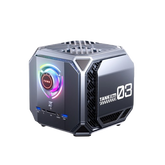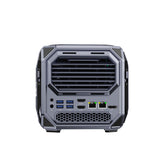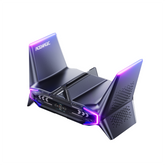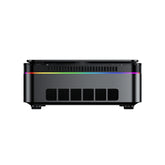How to Do a Reverse Image Search: Step-by-Step Guide

Reverse image search has become an essential online function for identifying, verifying, and tracking visual information. Instead of typing text-based queries, users can upload or link an image to discover its origin, related versions, or similar visuals across the web. This process supports both casual users and professionals in journalism, e-commerce, and digital rights management.
Reverse image search can:
- Trace image sources and verify copyright: Identify the original creator, publication date, or hosting website of an image to confirm authorship or detect unauthorized use.
- Verify factual accuracy: Check whether news or viral photos are authentic by finding when and where they first appeared online.
- Find products and related visuals: Upload a photo to locate identical or similar products across e-commerce platforms, compare listings, or access higher-resolution versions.
- Recognize people, places, or objects: Identify individuals, landmarks, plants, animals, or logos from an image for personal or educational purposes.
- Monitor content usage: Detect duplicate or modified brand assets to maintain consistent visual identity across digital platforms.
- Support academic and research verification: Confirm the originality of visual materials or verify data accuracy in research projects.
In the following sections, we’ll look at how to use reverse image search effectively, explore practical tips to refine your results, and discuss common issues that may cause searches to fail—helping you gain a complete understanding of this useful tool.
How to Use Google Reverse Image Search?
Google’s reverse image search remains the most widely used tool for locating the origin or related versions of an image. It integrates advanced pattern recognition within Google’s massive image index, enabling users to find where a picture appears across the internet. The process varies slightly between desktop and mobile devices, and understanding both methods improves search efficiency.
Desktop/PC Methods
Using a desktop computer provides three straightforward ways to conduct a reverse image search through Google Images.
Method 1: Upload Image (Local File Upload)
- Open images.google.com.
- Click the camera icon inside the search bar.
- Choose Upload an image.
- Select the file from your computer and wait for the search to complete.
This approach works best when the picture is saved locally, such as downloaded product photos, screenshots, or personal images that need verification. The uploaded file is temporarily processed to match patterns with indexed visuals.
Method 2: Image URL (Search via Link)
- Right-click the online image you wish to trace.
- Select Copy image address or Copy image link.
- Visit images.google.com again.
- Paste the link into the search field and press Enter.
This method is efficient for images already published online. Instead of uploading a file, Google references the image’s URL and retrieves visually or contextually related results.
Method 3: Drag and Drop (Quick Search)
- Open Google Images in one browser tab.
- Drag the image from a folder or another browser window directly into the search box.
This is often the fastest method on a desktop. It avoids manual uploading or copying URLs. Once dropped, the engine immediately begins analyzing the file’s visual features to generate results.
Mobile Methods: Utilizing Google Lens
On mobile devices, reverse image search is powered primarily through Google Lens, an image recognition feature built into the Google and Chrome apps. Lens combines traditional reverse image search with real-time object recognition.
A. Searching Saved Photos
- Open the Google App or Chrome App.
- Tap the Lens icon in the search bar.
- Choose a photo from your gallery.
- Wait for the search to display visually or contextually similar results.
This method is ideal for users who take pictures and want to identify an object later—such as a product seen in a store or an unfamiliar plant encountered outdoors.
B. Searching Web Images
- Long-press any image within a web page.
- Select the Search image with Google Lens.
- Review the search results below the image preview.
This process allows users to search without saving the image first. It is helpful when browsing product pages, articles, or social media posts.
C. Advanced Tip: Contextual Information
Google Lens does more than match visuals. It interprets text, objects, and locations within an image to provide additional context. For example:
- Detecting brands or logos to link to product pages.
- Translating a foreign text directly from a photo.
- Identifying landmarks and displaying background information.
This combination of computer vision and contextual analysis broadens the scope of reverse image search from simple identification to actionable insights.
Other platforms that can use reverse image search
While Google remains the default platform for reverse image search, several alternative tools provide unique advantages in database coverage, image recognition depth, and privacy handling.
Dedicated Search Engines and Their Specialties
Each major reverse image search engine emphasizes a different function. Understanding these distinctions can improve search accuracy and relevance.
A. TinEye
TinEye, launched in 2008, is one of the earliest dedicated reverse image search engines. It uses a proprietary algorithm that identifies even subtle changes between versions of the same image.
Key strengths:
- Strong in detecting modified or older versions of an image.
- Focused on privacy; uploaded images are not stored permanently.
- Maintains an extensive database covering over 60 billion indexed images.
Best use case: Tracking image misuse or verifying original publication dates outside the Google ecosystem.
B. Bing Visual Search
Microsoft’s Bing Visual Search integrates image recognition directly into the Bing search platform. Its technology identifies regions within a single image, allowing partial searches and contextual suggestions.
Key strengths:
- Recognizes multiple objects within one image.
- Supports shopping-related searches with direct product links.
- Performs well in fashion, travel, and landmark recognition.
Best use case: Shoppers and marketers needing visual search combined with product discovery.
C. Yandex (Russia)
Yandex, Russia’s largest search engine, provides highly advanced face and object recognition, particularly effective in non-Western image datasets.
Key strengths:
- Strong performance in facial identification and cultural imagery.
- Includes regional content often missing from Google’s index.
- Handles Cyrillic and Asian-language metadata efficiently.
Best use case: Research or investigative work involving international image sources or social media tracking.
Tips and Troubleshooting for Reverse Image Searches
Even with advanced algorithms, reverse image search may not always return accurate or complete results. Variations in image quality, cropping, or indexing speed can affect outcomes. Understanding how to refine searches and correct common issues improves precision and saves time.
Tips for a More Effective Reverse Image Search
To achieve more accurate and relevant search results, it helps to prepare your image and query carefully. While the technology behind reverse image search has improved significantly, refining your input can still make a major difference in accuracy and speed. Keep these guidelines in mind when conducting searches:
- Start with the clearest version of your image. High-resolution, sharp photos produce stronger visual matches because algorithms can detect finer patterns and details.
- Focus on the main subject. If the photo contains a busy background, crop it to highlight the object or area you want to analyze.
- Use consistent lighting and angles. Overexposed or underexposed pictures may limit recognition. Whenever possible, use images with balanced lighting and minimal filters.
- Avoid screenshots of compressed images. Screenshots often reduce image quality and introduce noise, which can distort results. Upload the original file instead.
- Add descriptive text when needed. After uploading, type short keywords related to your image (e.g., brand name, event, or location) to narrow the scope of search results.
- Try multiple search engines. Google, Bing, TinEye, and Yandex each maintain different databases. Running the same image through several engines often produces broader coverage.
Even when results are incomplete, these habits help improve accuracy over time. Reverse image search works best when the photo is clear, the search intent is specific, and the query is adjusted for context.
Troubleshooting “No Results Found”
Sometimes, a search returns no matches even when the image exists online. This issue often results from indexing delays, restricted websites, or image manipulation. The following approaches help resolve these challenges.
A. Use Search Operators
Search operators refine queries when image-only results seem limited. Try combining the image search with filters such as:
- site: Restrict searches to a specific domain.
- intitle: Focus on pages with related keywords in the title.
- Adding a key phrase: For instance, upload a photo of a sculpture and type “museum” or “artist” beside it.
B. Check Indexing Status
Images on private platforms or recently uploaded social media posts might not yet be indexed by search engines. Google and Bing prioritize publicly accessible pages. If the picture is from a closed group or messaging app, it will not appear in results.
C. Try a Different Engine
Each engine has a different database and visual recognition model. When Google yields limited results, try TinEye for modified versions or Yandex for region-specific content. Using multiple sources expands coverage and often uncovers images unavailable in one index.
Recommended Device: ACEMAGIC for Efficient Image Search and Editing
For users who frequently perform image searches, process large visuals, or verify digital content, a responsive and well-equipped computer can make a major difference. ACEMAGIC PCs are designed for professionals who handle high-resolution media and need consistent performance.
| Efficiency and Stability |
Inspiration and Performance |
Freedom and Efficiency |
|---|---|---|
| Intel Core i9-13900HK | AMD Ryzen AI 9 HX 370 | AMD Ryzen 7 7735HS |
| 32GB RAM + 1TB SSD | 32GB RAM + 1TB SSD | 16GB RAM + 512GB SSD |
| Wi-Fi 6E + BT5.2 | Wi-Fi 7 + BT5.4 | Wi-Fi 6 + BT5.2 |
| ACEMAGIC M1 Mini PC | ACEMAGIC F5A Mini PC | ACEMAGIC RX 16 Laptop |
 |
 |
 |
| Buy Now | Buy Now | Buy Now |
Explore ACEMAGIC’s full product range through their official website to find the right device for your visual projects and daily image-based work.
FAQ
Can you reverse image search a screenshot?
Yes. A screenshot can be used for reverse image search, but the results depend on its quality and clarity. Screenshots often compress or blur fine details, which may limit how accurately search engines identify matching visuals. If possible, crop the screenshot to focus on the key area and use the highest available resolution. Tools such as Google Images and TinEye can still recognize screenshot content effectively, especially if it includes distinctive shapes or text.
How to do a reverse image search on a phone?
On mobile devices, reverse image search is handled primarily through Google Lens. To use it:
- Open the Google App or Chrome App on your phone.
- Tap the Lens icon beside the search bar.
- Choose or capture an image.
- Highlight the area you want to analyze and swipe up to view results.
You can also long-press an image on a web page and select “Search image with Google Lens.” This method lets you identify objects, locate sources, or explore related visuals directly without saving the photo first.
Can I search for a person by photo?
You can upload a person’s photo to reverse image search engines such as Google Images or Yandex. These platforms may find visually similar images or pages where the same photo appears. However, search accuracy depends on how widely that image has been published online. Keep in mind that public tools do not provide private facial recognition capabilities; they only identify content already indexed on the web. Always consider privacy and consent before using personal photos for search.
Can a screenshot be traced?
A screenshot itself cannot be traced back to its creator or device unless it contains metadata or visible information linking it to a specific source. Most screenshots remove identifying data during the capture process. However, if the image is shared publicly, reverse image search can reveal where it appears online. For sensitive content, avoid uploading screenshots that contain personal details or unblurred information.








Leave a comment
Please note, comments need to be approved before they are published.